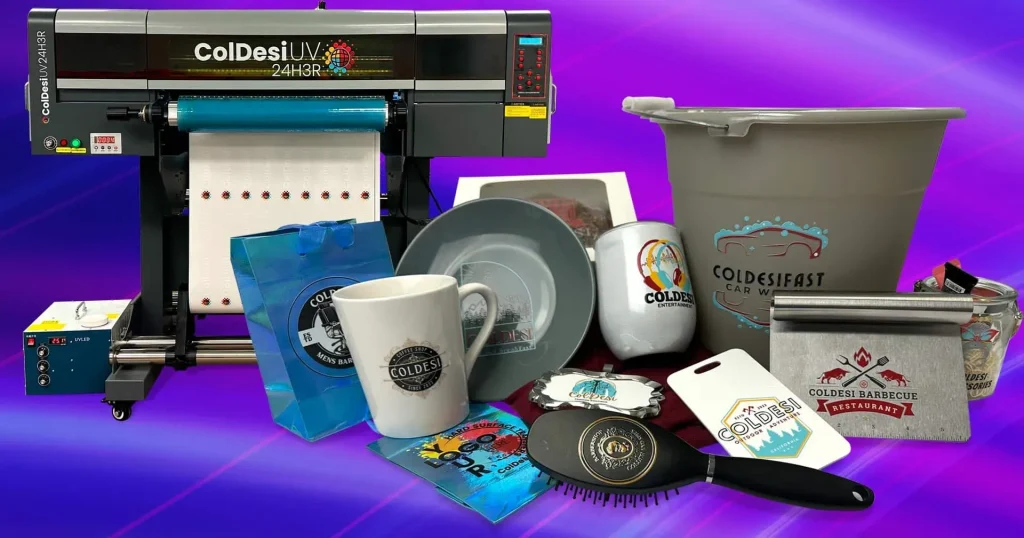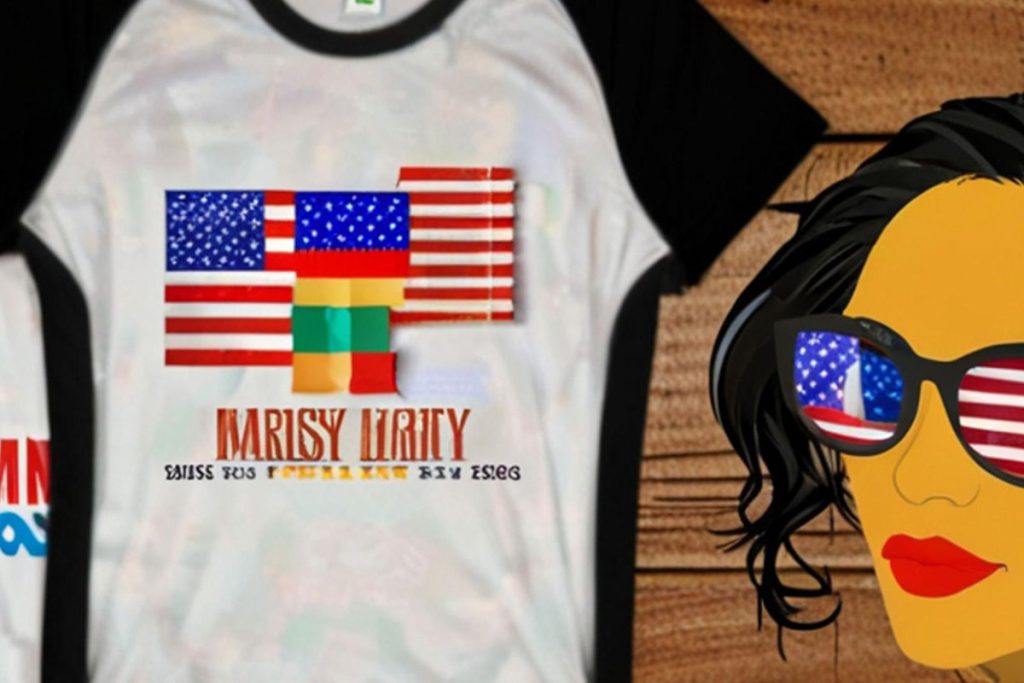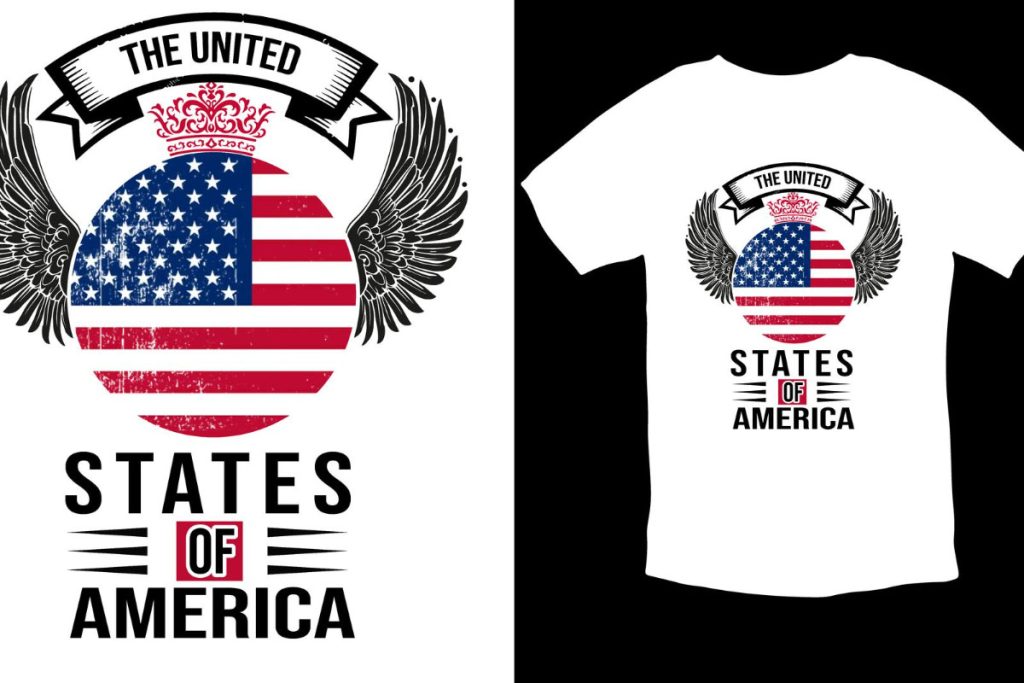UV DTF printing is a groundbreaking technique that is reshaping the custom printing landscape for businesses and enthusiasts alike. By utilizing advanced UV DTF techniques, this method allows for stunning visuals that are both vibrant and long-lasting, catering to a plethora of surfaces from textiles to rigid materials. Notably, 3D-texture UV printing adds a tactile element to designs, enhancing their appeal and uniqueness. Furthermore, with innovations like UV DTF lamination, the prints achieve a durable finish, ensuring that they maintain their quality over time. The flexibility offered by equipment such as Mimaki DTF printers makes UV DTF printing a versatile choice for anyone looking to elevate their printing capabilities.
Direct to Film (DTF) printing using ultraviolet (UV) technology is ushering in a new era of customized printing solutions. This method merges UV curing with traditional DTF approaches, resulting in high-quality, detailed prints that are remarkably resistant to wear and fading. As the industry embraces these advanced techniques, including 3D-texture UV printing, the artistic possibilities expand dramatically. The process also incorporates UV DTF lamination, which not only enhances print durability but also enriches color depth. Overall, this innovative combination supports a wide range of applications, making it a prime choice for personalized merchandise, promotional items, and more.
Understanding the Basics of UV DTF Printing
UV DTF printing combines advanced printing technology to produce outstanding custom prints. The process starts with UV-cured inks that are transferred onto a specially designed film, enabling high-quality prints that maintain vibrancy over time. This method distinguishes itself from conventional printing techniques by leveraging ultraviolet light for immediate ink curing, leading to higher efficiency and preventing delays in production. With a strong focus on durability and color richness, UV DTF printing is ideal for businesses aiming for a professional finish in their products.
One of the standout features of UV DTF printing is its versatility across various surfaces, including textiles, plastics, and even metal. This adaptability widens the scope of creative possibilities for designers and entrepreneurs alike. Moreover, the adhesive qualities of UV DTF prints ensure strong adherence to materials, reducing the risk of peeling or fading. As the demand for unique and personalized products grows, understanding these basic principles of UV DTF printing becomes essential for anyone looking to delve into this dynamic field.
Innovations in 3D-Texture UV Printing
The advent of 3D-texture UV printing marks a revolutionary step forward within the UV DTF printing arena. One prominent innovation is the eufyMake E1, the world’s first personal 3D-texture UV printer. This compact machine enables users to create textured prints right from a small workspace, making advanced UV DTF technology accessible to hobbyists and small businesses. With a print bed size of 330 x 420mm, the eufyMake E1 exemplifies how innovation is democratizing production capabilities, allowing anyone to explore the potential of textured designs.
3D-texture UV printing not only enhances the visual appeal of products but also adds a tactile dimension that sets them apart in a crowded market. These unique textures can be used in various applications, from creating standout promotional items to personal gifts that provide an engaging experience for the recipient. As technology continues to evolve, users can expect to see increasingly diverse capabilities within the realm of 3D-texture printing, further pushing the boundaries of what can be achieved with UV DTF methods.
The Role of UV DTF Lamination
UV DTF lamination is a critical component in the overall process of achieving high-quality and durable prints. This technique involves applying a protective layer over printed materials, enhancing their resistance to damage from environmental factors such as moisture and UV light. By incorporating UV DTF lamination, businesses can ensure that their prints retain their vibrant colors and striking details over time, allowing products to maintain their appealing aesthetics in even the harshest conditions.
Using a UV DTF lamination machine effectively not only improves the longevity of prints but also contributes to a professional finish. The lamination process harmonizes seamlessly with UV DTF printing, offering a layer of gloss or matte finishes depending on the desired effect. This additional layer can make printed materials feel more substantial and look more polished, which is essential for branding efforts in competitive markets. For small businesses, mastering the art of lamination can significantly elevate product presentation.
Equipment Essentials for Optimal UV DTF Printing
To achieve optimal results in UV DTF printing, having the right equipment is paramount. The primary piece of equipment needed is a high-quality UV DTF printer, designed to print directly onto the specialized film. Selecting a printer tailored to your business needs, such as size and functionality, can greatly influence the quality of your prints. In addition, investing in a UV DTF lamination machine is crucial for protecting prints and ensuring that all transfers onto surfaces are smooth and seamless.
Other essential equipment includes a heat press for applying prints to textiles and various surfaces, as well as cleaning supplies to maintain the printer’s longevity. Effective ink management is another vital consideration, with the need to use high-quality UV inks specifically formulated for DTF printing applications. Regular maintenance and careful handling of equipment will enhance operational efficiency and ultimately lead to more impressive print outputs.
Applications of UV DTF Printing in Various Industries
The versatility of UV DTF printing opens up a world of applications across diverse industries. Custom stickers are a popular product, catering to businesses looking to enhance their branding with personalized materials. The ability to produce intricate designs with rich colors makes UV DTF printing an ideal choice for promotional products, where visual appeal is critical. They stand out in the market, offering a unique and catchy impression that can effectively grab customer attention.
Beyond promotional materials, UV DTF printing is increasingly seen in creating unique personalized gifts. This technology allows for the customization of items ranging from plaques to intricate engravings. By leveraging the capabilities of UV DTF printing, businesses can cater to a growing consumer demand for personalized items, thus improving customer engagement and satisfaction. Moreover, this approach not only meets customer needs but also advances brand loyalty, as unique products resonate deeply with individual preferences.
Best Practices for Successful UV DTF Printing
To excel in UV DTF printing, adopting best practices is essential. One of the foremost considerations is surface preparation, which involves ensuring that substrates are clean and free from dust or oils. Proper cleaning enhances print adhesion and overall quality. Additionally, employing high-quality UV inks designed specifically for DTF applications will provide brighter, more vivid colors in prints. An informed ink management strategy can guarantee consistent results throughout the production process.
Regular maintenance of printing equipment is also crucial for sustaining optimal print quality. This includes cleaning the printer heads and ensuring all components are functioning correctly. Experimenting with textures and exploring the features of advanced 3D-texture printers can yield unique designs that elevate product differentiation in the marketplace. By staying informed about the latest industry practices and technologies, businesses can harness the potential of UV DTF printing to its fullest.
Frequently Asked Questions
What is UV DTF printing and how does it work?
UV DTF printing, or UV Direct to Film printing, is an innovative technique that involves transferring UV-cured inks onto a specialized film, which can then be applied to various surfaces. This process uses ultraviolet light to cure the ink instantly, allowing for vibrant, durable prints that require no drying time.
What are the benefits of using UV DTF techniques in custom printing?
UV DTF techniques offer numerous benefits for custom printing, including the ability to produce high-quality, colorful prints with excellent adhesion and resistance to fading. Additionally, the UV curing process allows for immediate handling of prints, increasing overall production efficiency.
How is 3D-texture UV printing different from standard UV DTF printing?
3D-texture UV printing enhances standard UV DTF printing by adding a tactile, three-dimensional effect to the prints. This innovation allows for unique designs that can capture more attention and engage customers by offering a distinctive visual and sensory experience.
What role does UV DTF lamination play in the printing process?
UV DTF lamination is essential for protecting printed surfaces and ensuring smooth application. This process involves applying a protective layer over UV DTF prints, enhancing durability and finish, thus improving the overall quality of the final product.
Which equipment is essential for successful UV DTF printing?
To achieve successful UV DTF printing, essential equipment includes a UV DTF printer for printing on film, a UV DTF lamination machine for protecting prints, and optional tools like a heat press for applying prints on certain materials.
Are Mimaki DTF printers suitable for UV DTF printing?
Yes, Mimaki DTF printers are specifically designed to enhance UV DTF printing capabilities. They are known for improving production speed and print quality, making them a great choice for businesses looking to invest in high-performance printing technology.
| Key Point | Description |
|---|---|
| Introduction to UV DTF Printing | UV DTF printing combines UV and DTF techniques to produce vibrant, durable prints on various surfaces. |
| Printing Process | Involves transferring UV-cured ink onto a specialized film for high-quality prints with strong adhesion and fading resistance. |
| Recent Innovations | Includes 3D-Texture UV printers, lamination machines for better finishes, and advancements showcased at industry events. |
| Equipment Needed | Essential tools include a UV DTF printer, lamination machine, heat press, and cleaning supplies for maintenance. |
| Best Practices | Key practices include surface preparation, ink management, and regular equipment maintenance to ensure quality. |
| Applications | Versatile applications include custom stickers, textured prints, promotional products, and personalized gifts. |
Summary
UV DTF printing is revolutionizing the custom print industry by providing an efficient and versatile solution for small businesses and consumers. This innovative process marries the advantages of UV printing with Direct to Film technology, enabling creators to produce high-quality, vibrant prints that adhere strongly and resist fading. As advancements in technology continue to emerge, such as the introduction of the 3D-Texture UV printers, the capabilities of UV DTF printing are expanding, making it increasingly accessible. By implementing best practices and utilizing the right equipment, businesses can leverage UV DTF printing to enhance product offerings, explore creative designs, and meet diverse customer needs.



